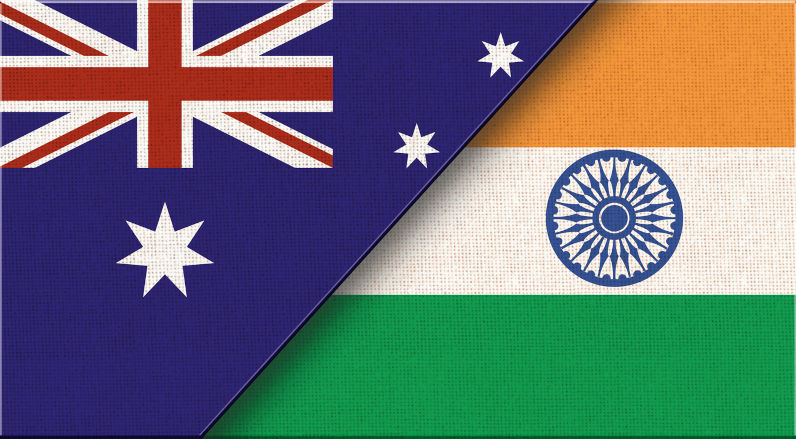An India-Australia mineral partnership is critical for resilience
August 20, 2025
Critical minerals have become lynchpins of the 21st century economy as countries move towards green energy and digitisation.
India and Australia — two Indo-Pacific democracies with deep strategic ties and shared commitment to a rules-based global order — are uniquely positioned to shape a transparent, diversified and accessible critical minerals supply chain.
Today, China dominates the critical minerals value chain, creating strategic vulnerabilities and heightening the urgency for diversification. This was made clear in 2023 when China imposed restrictions on gallium and germanium, followed by tighter controls on graphite exports to the US in 2024 and export restrictions on rare earths in June 2025. These restrictions have led to delayed production of inputs needed for renewable energy, electric vehicles, defence equipment and heightened concerns about over-dependence on China. A resilient critical minerals supply chain has become a geopolitical imperative.
India has a rapidly expanding market, industrial base and strong plans to expand into electric vehicles and renewable energy, but remains dependent on imports for many key minerals. Australia possesses substantial reserves of critical minerals and seeks a reliable partner to co-invest in processing, value addition and stable off-take agreements. Both nations can build a mineral corridor, supporting not only their own domestic agendas, but also the broader Indo-Pacific need for a resilient critical minerals supply chain.
The Australia-India Economic Co-operation and Trade Agreement that came into force in 2022 already serves as a foundation for co-operation. Under this agreement, tariffs on key Australian minerals — such as zirconium, titanium, manganese, copper, cobalt, nickel, aluminium, tin ores, titanium dioxide and alumina — have been removed, easing Indian access. AI-ECTA has also promised regulatory certainty, technical co-operation and investment facilitation across the mineral value chain. From investment in Australian mines to enhancing India’s manufacturing capacity, this agreement advances both countries’ interests by enabling Australia to expand its processed mineral exports and helping India meet its clean energy and electric vehicle targets.
Building on deepening strategic ties, in 2022 India’s Khanij Bidesh India Limited — a joint venture company between three government enterprises — and Australia’s Critical Minerals Office signed a memorandum of understanding to establish the Australia-India Critical Minerals Investment Partnership. The aim was to enhance trade and investment in critical minerals and support India’s clean energy and manufacturing goals. In 2023, ministers from both countries identified five projects in a bilateral meeting to develop supply chains between India and Australia.
Looking ahead, the India-Australia partnership must evolve from project-level engagements to a strategic, long-term framework that secures the entire critical minerals value chain from exploration to end-use technologies. Early investments in lithium and cobalt projects are a start. The next stage should focus on enhancing vertical integration, which will enable both countries to move up the value chain.
One major step would be the creation of a dedicated mineral corridor between India and Australia. This corridor would function as a seamless ecosystem, linking Australian mines with Indian processing units and manufacturing hubs. It should be supported by policy alignment, logistics infrastructure, financing mechanisms and regulatory co-ordination.
This corridor could feature shipping routes and port agreements between mining hubs in Western Australia and processing zones in the Indian states of Andhra Pradesh, Tamil Nadu and Odisha. Joint research and development centres should focus on processing technology, battery chemistry and rare earth separation techniques. A one-window operation could be established to give faster environmental clearances for bilateral critical mineral ventures. Strategic stockpiling mechanisms for certain minerals like lithium, cobalt and rare earths would ensure steady stock during supply chain disruptions.
To minimise early-stage risks and accelerate the development of these joint ventures, a bilateral fund or dedicated corpus which has government support, along with the private players, could be established. This would be particularly impactful for downstream processing in sectors such as electric vehicles, battery manufacturing, semiconductors and defence.
Additionally, India should look beyond imports to co-develop processing capabilities domestically. Australia has substantial mineral reserves but lacks domestic demand to scale downstream industries alone. Through co-locating Australian investments in Indian battery and clean-energy sectors, both India and Australia can capture greater value domestically while reducing dependence on third-party refiners.
To further institutionalise this partnership, Australia and India should spearhead the establishment of an Indo-Pacific Minerals Critical Minerals Consortium, where like-minded countries can come together and co-ordinate efforts on data standardisation, processing, refining and innovation in the sector.
Finally, India and Australia should champion multilateral co-ordination on standard setting and traceability. The mineral corridor should adhere to ethical labour and sustainable mining practices, alongside ensuring transparency.
Together, these initiatives can transform India-Australia co-operation into a strategic partnership that shapes green industrialisation and energy security in the Indo-Pacific. The mineral corridor can serve as a pillar of the regional architecture of resilient critical mineral co-operation.
Republished from East Asia Forum, 18 August 2025
The views expressed in this article may or may not reflect those of Pearls and Irritations.
